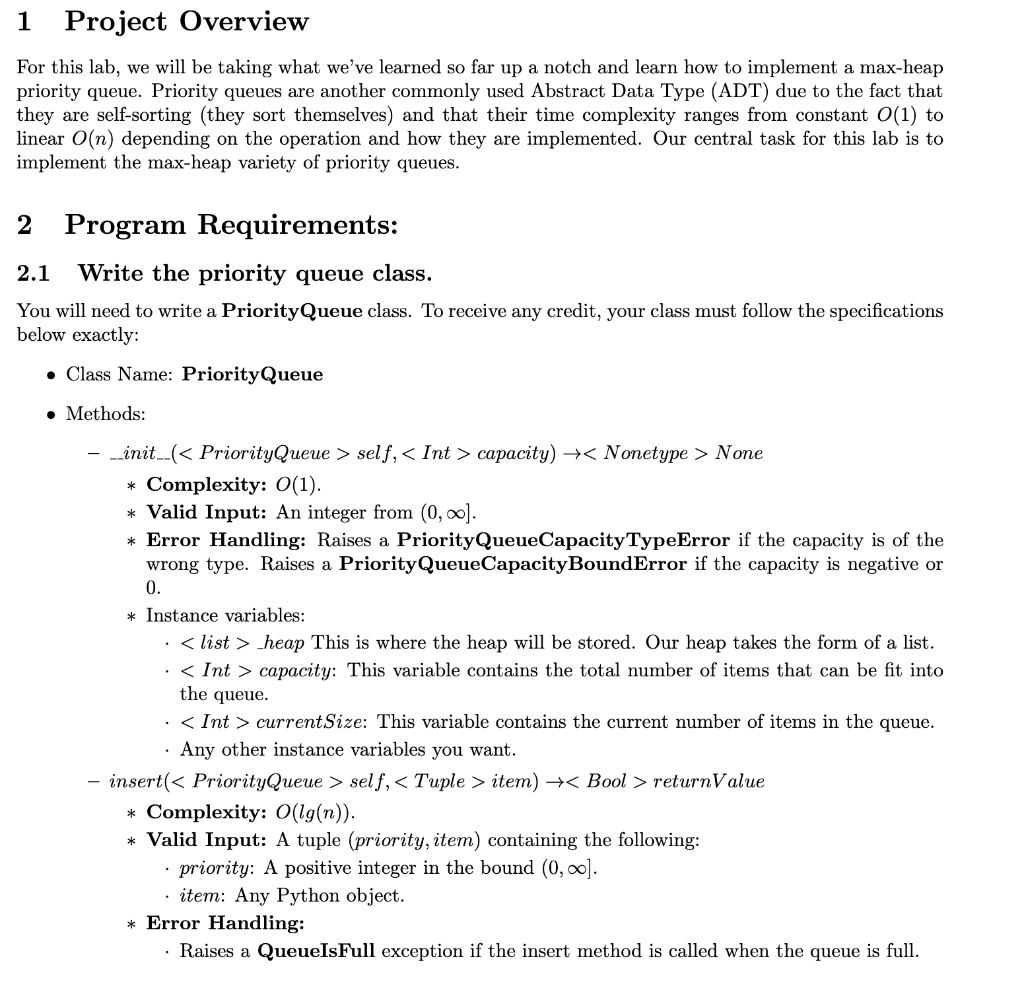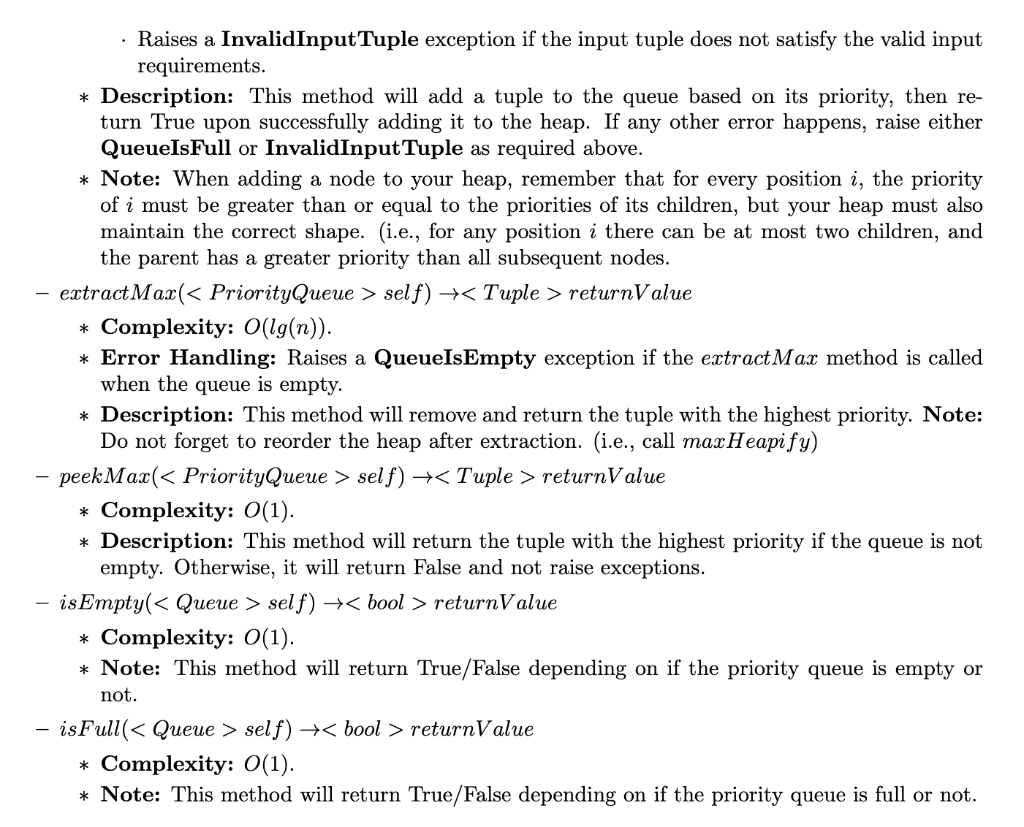Please write the following program in Python.


1 Project Overview For this lab, we will be taking what we've learned so far up a notch and learn how to implement a max-heap priority queue. Priority queues are another commonly used Abstract Data Type (ADT) due to the fact that they are self-sorting (they sort themselves) and that their time complexity ranges from constant O(1) to linear O(n) depending on the operation and how they are implemented. Our central task for this lab is to implement the max-heap variety of priority queues. 2 Program Requirements: 2.1 Write the priority queue class. You will need to write a PriorityQueue class. To receive any credit, your class must follow the specifications below exactly: - Class Name: PriorityQueue - Methods: _ __init_- ( self, capacity ) None * Complexity: O(1). * Valid Input: An integer from (0,]. * Error Handling: Raises a PriorityQueueCapacityTypeError if the capacity is of the wrong type. Raises a PriorityQueueCapacityBoundError if the capacity is negative or 0. * Instance variables: - > heap This is where the heap will be stored. Our heap takes the form of a list. - capacity: This variable contains the total number of items that can be fit into the queue. - > currentSize: This variable contains the current number of items in the queue. - Any other instance variables you want. - insert ( self, item ) returnValue * Complexity: O(lg(n)). * Valid Input: A tuple (priority, item) containing the following: - priority: A positive integer in the bound (0,]. - item: Any Python object. * Error Handling: - Raises a QueueIsFull exception if the insert method is called when the queue is full. - Raises a InvalidInputTuple exception if the input tuple does not satisfy the valid input requirements. * Description: This method will add a tuple to the queue based on its priority, then return True upon successfully adding it to the heap. If any other error happens, raise either QueueIsFull or InvalidInputTuple as required above. * Note: When adding a node to your heap, remember that for every position i, the priority of i must be greater than or equal to the priorities of its children, but your heap must also maintain the correct shape. (i.e., for any position i there can be at most two children, and the parent has a greater priority than all subsequent nodes. - extractMax ( self ) returnValue * Complexity: O(lg(n)). * Error Handling: Raises a QueueIsEmpty exception if the extractMax method is called when the queue is empty. * Description: This method will remove and return the tuple with the highest priority. Note: Do not forget to reorder the heap after extraction. (i.e., call maxHeapify) - peekMax ( self ) returnValue * Complexity: O(1). * Description: This method will return the tuple with the highest priority if the queue is not empty. Otherwise, it will return False and not raise exceptions. isEmpty ( self ) returnValue * Complexity: O(1). * Note: This method will return True/False depending on if the priority queue is empty or not. - isFull ( self ) returnValue * Complexity: O(1). * Note: This method will return True/False depending on if the priority queue is full or not








